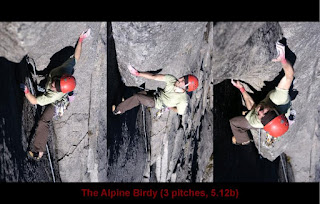Reports on this trip were published on the Alpinist and Climbing Magazine websites as well as the Base Camp section of a Climbing Magazine issue.
Photos by me and Boer Zhao
Mt. Kinabalu is the centrepiece of the Kinabalu National Park, a World Heritage Site, which is accessed from Kota Kinabalu the capital of the Malaysian state of Sabah. The Park contains a diverse and unique biology containing many species that occur no where else in the world. The preservation of the environment is incredibly important to the locals as ecotourism is the main industry in Sabah so any expeditions up the mountain have to be run in full cooperation with the Park Service. I found that during our 2 week stay the Park Service were more than helpful and were always willing to take money off us for permits, hut fees, insurance, guide fees etc etc… After spending time on the mountain though you start to see that the money goes to good use with the park being one of the best run I have ever seen and in imaculate condition. A day hike (2 days with heavy packs) up a tourist trail leads you to the summit plataeu and a fairytale land of granite spires.
The climbing isn't for everyone… Four of us headed up the mountain, Edd Stockdale, a climbing bum from Perth, Boer Zhao, a climber we met in China, Brad Stapperfenne, an ex-marine from the United States and me, also a climbing bum from Perth. The walk up took us a lousy wet two days as we refused to hire porters and were punished with packs in excess of 40kg. This was almost too much for all and Edd, whos pack was a beaten up Haul Bag, never seemed to recover. Upon Edd and Boers discovery of the run out alpine style climbing they came to a decision that alpine climbing sucked. Edd left after a few days and Boer stuck it out but prefered not to lead. Luckily Brad used to leading sandbagged 5.9s in the states and who had been
The opportunities are endless. During my 2 week stay I noticed an abundance of unclimbed lines, managed to get the FFA on two previous aid routes(now graded 11- and 11+), and put up The Alpine Birdy (3 pitches, 5.12b), the hardest free route on the mountain and named after Edd's views on alpine climbing and the arete also looking like a middle finger. This is hard considering you're pulling the moves at 4000m causing your lungs to work a lot harder than normal. Apart from the granite spires that litter the summit plataeu the more futuristic and greatest new route opportunities exist in a kilometre deep rift seperating thr East and Western sides of the plataeu. This rift is known as Lows Gully and a first ascent of its larger walls is most likely only going to be available to party of skilled wall climbers in siege like expedition style.

Anyone wanting to experience and add to this developing granite paradise should contact the park service atleast a month in advance and prepare for some rewarding hard work. A miniguide is present in the Climb Malaysia guide book although it doesn’t give topos or even very good discriptions of routes. It does help you get psyched though and gives you information on getting to the mountain and the spires on the plataeu. For route discriptions the best resource is the Gurkha Hut log book on the Western Plataeu. The Gurkha hut is the primary residence for climbers, sleeping four, and needs to be booked from the park service.
No comments:
Post a Comment